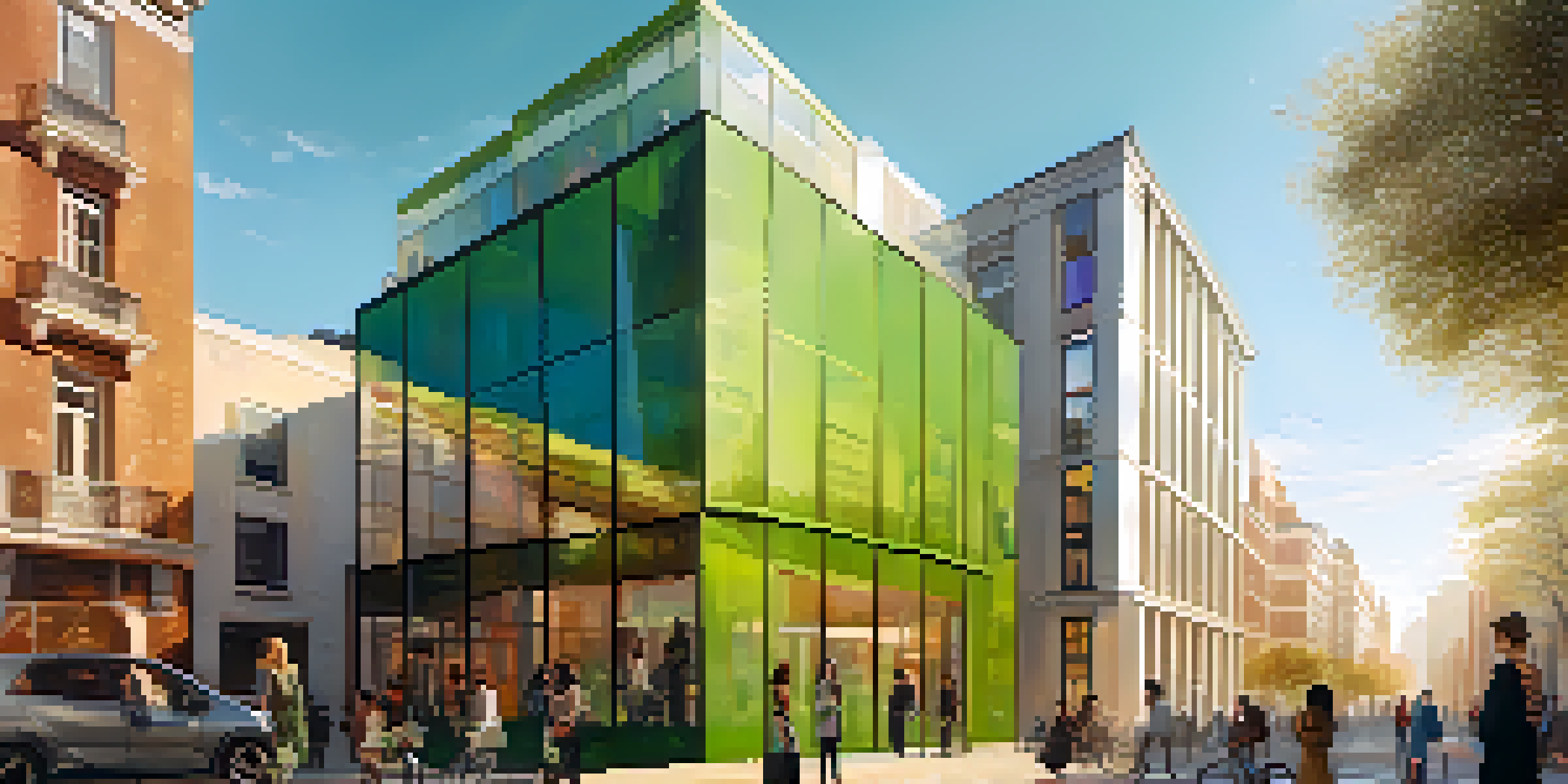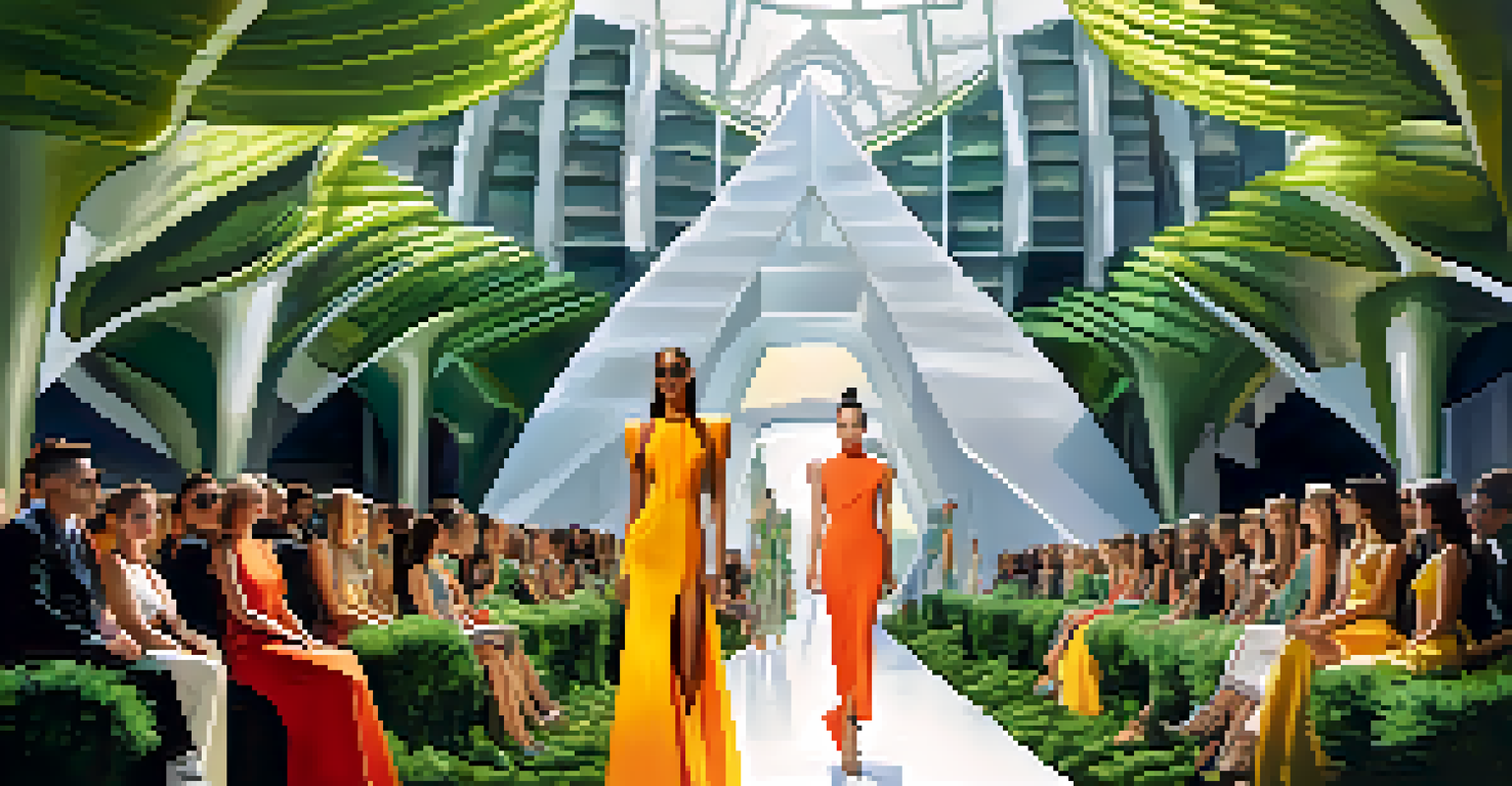The Interplay of Fashion Trends and Architectural Styles Today

The Historical Bond Between Fashion and Architecture
Fashion and architecture have always shared a unique relationship, often reflecting the cultural and societal values of their time. For instance, the grandeur of Baroque architecture paralleled the opulent styles of clothing during the same period. This interplay is not merely coincidental; both fields influence each other, leading to innovations that push boundaries and redefine norms.
Fashion is the armor to survive the reality of everyday life.
As we look back, we can see how the Art Deco movement in the 1920s influenced both the sleek lines of buildings and the glamorous designs of dresses. Just as fashion evolves, so too does architecture, with each era leaving its mark. Today, this historical bond inspires contemporary designers to draw parallels between fabric and form.
Understanding this history enriches our appreciation of modern designs. It shows how past influences shape current expressions, providing a rich tapestry of ideas that continue to inspire today's creators.
Contemporary Fashion Influencing Urban Architecture
In today's urban environments, we can see fashion trends shaping architectural designs. For example, the rise in popularity of sustainable fashion has led to a demand for eco-friendly buildings that reflect this ethos. Architects are now incorporating green roofs, recycled materials, and energy-efficient technologies, mirroring the values of conscious consumers.

Moreover, the minimalistic aesthetic prevalent in fashion has translated into sleek, modern architectural styles. Buildings today often feature clean lines and open spaces, paralleling the uncluttered designs seen in contemporary clothing. This shift represents not just a style choice but a lifestyle that values simplicity and functionality.
Fashion and Architecture's Bond
Fashion and architecture have historically influenced each other, reflecting cultural and societal values of their times.
As cities evolve, the fusion of fashion and architecture becomes more apparent, creating environments that resonate with the lifestyles of their inhabitants. This synergy fosters a sense of identity and belonging, helping to shape the way we interact with our surroundings.
Cultural Trends and Architectural Innovation
Cultural movements are powerful forces in both fashion and architecture. The rise of streetwear, for instance, has prompted architects to design spaces that reflect urban culture, such as vibrant public spaces and community art installations. These designs foster creativity and connection among diverse populations, much like the fashion styles that emerge from local neighborhoods.
Architecture should speak of its time and place, but yearn for timelessness.
Additionally, architectural styles are often adapted to accommodate cultural events, festivals, and gatherings. Buildings may incorporate elements that pay homage to local traditions, creating a dialogue between the structure and the community it serves. This approach not only enhances the aesthetic appeal but also builds a sense of heritage.
By embracing cultural trends, architects can create dynamic spaces that celebrate diversity and inclusivity. This responsiveness to the cultural zeitgeist ensures that architecture remains relevant and engaging, capturing the spirit of the times.
The Role of Technology in Shaping Trends
Technology plays a crucial role in both fashion and architecture, driving innovation and creating new possibilities. In fashion, advancements in textiles have led to the development of smart fabrics that change color or temperature. Similarly, architects are using cutting-edge technologies like 3D printing and augmented reality to design and visualize structures in unprecedented ways.
This technological synergy allows designers to experiment with materials and forms, leading to unique architectural expressions that resonate with current fashion trends. For example, the use of reflective materials in buildings can mirror the sleek, metallic trends seen in modern fashion, creating a captivating visual narrative.
Sustainability in Design
The commitment to sustainability is driving innovation in both fashion and architecture, leading to eco-friendly materials and practices.
As technology continues to evolve, we can expect even more exciting intersections between these fields. This ongoing dialogue not only enhances creativity but also redefines what is possible in both fashion and architecture.
Sustainable Fashion and Green Architecture
The push for sustainability has become a dominant theme in both fashion and architecture. Designers are increasingly prioritizing eco-friendly materials and ethical production methods, while architects are focusing on creating buildings that minimize environmental impact. This shared commitment to sustainability has led to innovative solutions that address contemporary challenges.
For instance, the use of reclaimed materials in both fashion and architecture not only reduces waste but also adds character and history to designs. Buildings made from recycled materials can tell a story, much like garments crafted from vintage fabrics, creating a narrative that resonates with eco-conscious consumers.
As we move forward, the connection between sustainable fashion and green architecture will likely deepen. This collaboration can inspire new ways of thinking about consumption, encouraging a more thoughtful approach to design in both industries.
The Influence of Social Media on Design Trends
Social media has revolutionized how fashion and architecture are perceived and consumed. Platforms like Instagram and Pinterest allow trends to spread rapidly, influencing designers and architects alike. This instant access to inspiration has led to a more dynamic interplay between the two fields, where ideas can be shared and adapted in real-time.
In fashion, we often see architectural elements incorporated into runway designs, such as structural silhouettes or bold lines that mimic building shapes. Conversely, architectural firms are increasingly looking to fashion for inspiration, creating spaces that echo popular styles and aesthetics found online. This reciprocal relationship fosters creativity and innovation.
Social Media Shapes Trends
Social media has transformed how fashion and architecture are perceived, allowing trends to spread rapidly and inspiring cross-disciplinary collaboration.
As social media continues to shape our cultural landscape, its impact on design trends will only grow. This interconnectedness encourages collaboration and experimentation, resulting in a vibrant fusion of fashion and architecture that captivates audiences worldwide.
The Future of Fashion and Architecture Interplay
Looking ahead, the relationship between fashion and architecture is set to evolve even further. As we embrace new technologies and cultural shifts, we can expect to see even more creative collaborations that blur the lines between the two disciplines. This evolution will likely lead to innovative designs that reflect the complexities of modern life.
The next generation of designers will carry forward this legacy, integrating fashion sensibilities into architectural practices. This could mean creating spaces that adapt to the changing needs of their inhabitants, much like clothing that evolves with personal style over time.

Ultimately, the interplay of fashion trends and architectural styles will continue to enrich our environments. By celebrating this connection, we can foster a deeper appreciation for the creativity that shapes our daily lives, reminding us that both fashion and architecture are reflections of who we are.